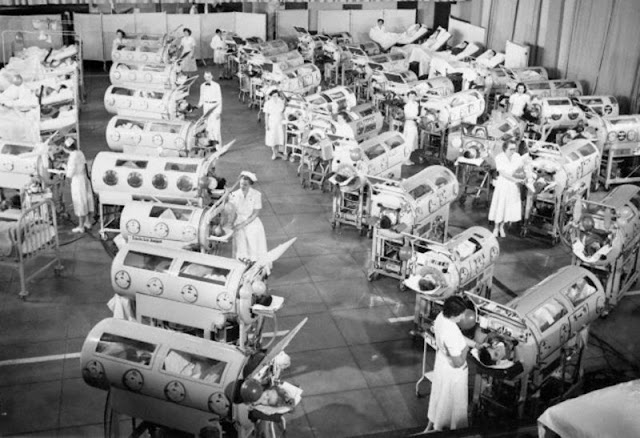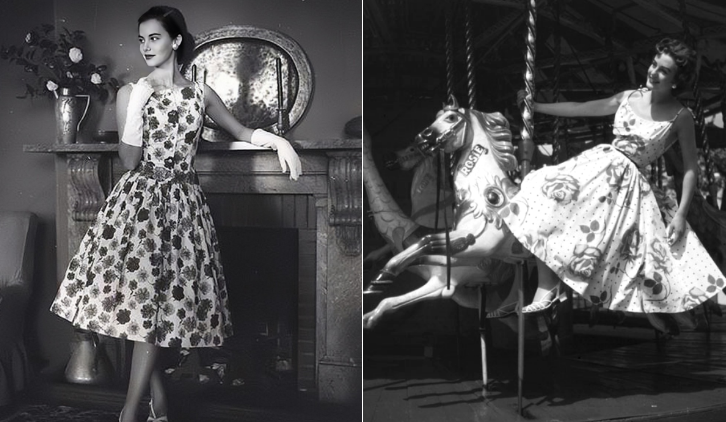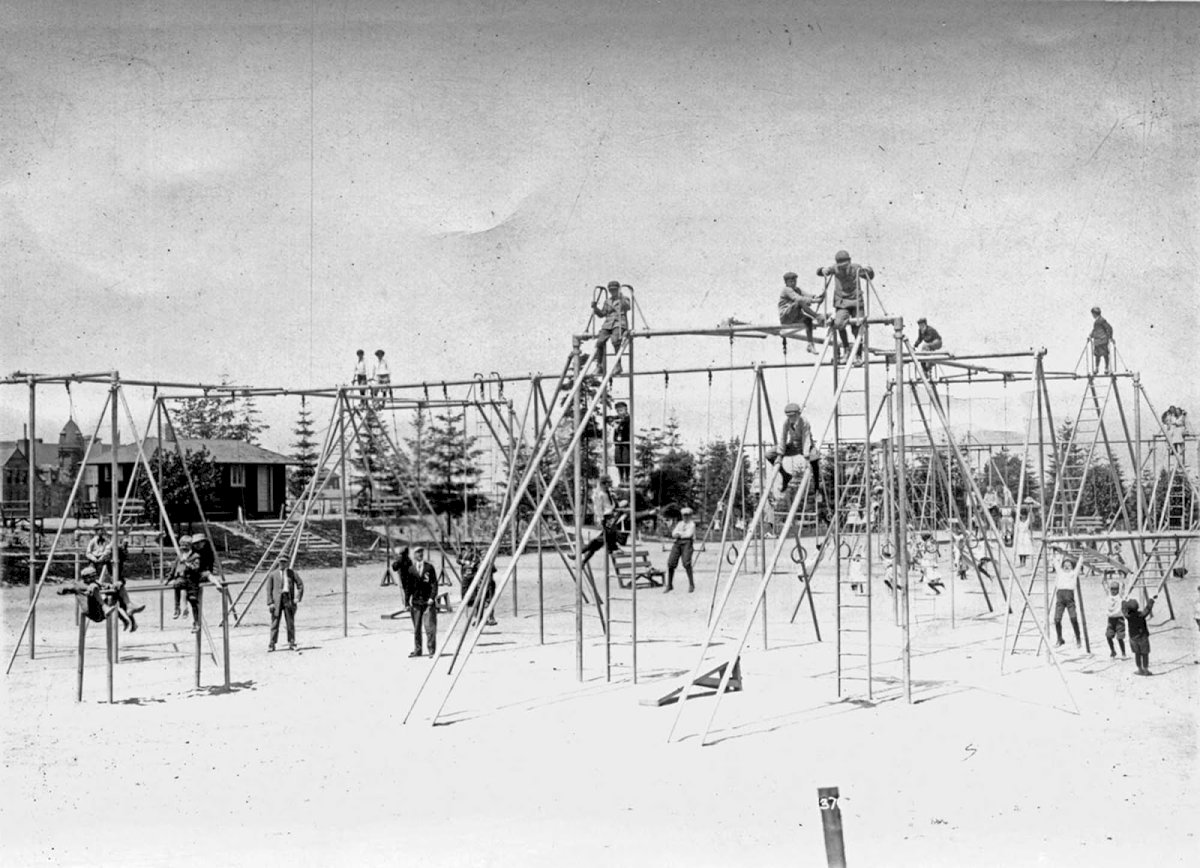In the early 20th century, polio was one of the most feared diseases in industrialized countries, paralysing hundreds of thousands of children every year. A highly infectious disease, polio attacks the nervous system and can lead to paralysis, disability and even death. The symptoms – pain and weakness, fatigue and muscle loss – can strike any time from 15 to 50 years after the initial disease. In 1952, more than 21,000 Americans contracted a paralyzing form of polio, and 3,000 died from it. Once infected, there was no treatment besides time and tending to the symptoms.
No device is more associated with polio than the tank respirator, better known as the iron lung. Physicians who treated people in the acute, early stage of polio saw that many patients were unable to breathe when the virus’s action paralyzed muscle groups in the chest. Death was frequent at this stage, but those who survived usually recovered much or almost all of their former strength.
Nothing worked well in keeping people breathing until 1927, when Philip Drinker and Louis Agassiz Shaw at Harvard University devised a version of a tank respirator that could maintain respiration artificially until a person could breathe independently, usually after one or two weeks. The machine was powered by an electric motor with two vacuum cleaners. The pump changed the pressure inside a rectangular, airtight metal box, pulling air in and out of the lungs.
Inventor John Emerson had refined Drinker’s device and cut the cost nearly in half. Inside the tank respirator, the patient lay on a bed (sometimes called a “cookie tray”) that could slide in and out of the cylinder as needed. The side of the tank had portal windows so attendants could reach in and adjust limbs, sheets, or hot packs.
Factoids:
- The National Foundation for Infantile Paralysis began mass distribution of tank respirators in 1939.
- In the 1930s, an iron lung cost about $1,500—the average price of a home.
- In 1959, there were 1,200 people using tank respirators in the United States; in 2004, there were 39.

|
| Polio (poliomyelitis) mainly affects children under 5 years of age. |

|
| 1930 Drinker Respirator. When this photo was taken on September 19, 1930, this Drinker iron lung at St. Luke’s Hospital in Chicago, Illinois reportedly was the only one in existence between Chicago and California. |

|
| Although the patient could breathe in the machine, he could do little else besides look up at a mirror reflecting the room behind him, ca. 1930s. |

|
| 1930 Drinker Iron Lung |

|
| Betty Sue Martin, 5, can still smile after 35 days in an Iron Lung at Johns Hopkins Hospital, ca. 1937. |

|
| In this 1938 photo from Alton Illinois, the caption states “An 18 year-old bride with infantile paralysis, Mrs. Myra Rothe is kept alive by an iron lung at St. Joseph’s Hospital here. Physicians gave her a fighting chance to recover.” |
 |
| In this photo dated March 15, 1940, the caption stated "Homemade Iron Lung failed to save life despite ingenuity of father. James Bailey, 25 watching operation of device on his baby son, Paul which kept him alive two days. The infant died soon after. Bailey fashioned the apparatus from an oil barrel, washing machine parts, and rubber tire tubing.” |
 |
| 1940s Pediatric Iron Lung |
 |
| Late 1940s Iron Lung with Dome |
 |
| 1940s |
 |
| Verne Muskopf, a nurse at St. Anthony’s Hospital, South Grand Boulevard and Chippewa Street, helps iron-lung patient Louis Abercrombie smoke a cigarette in November 1949. Abercrombie was a polio patient and had been in an iron lung for almost three years. Hospital policies on smoking were different then. |
 |
| 1950s Infant Iron Lung |
 |
| 1950s Dome |
 |
| In the 1950s, Dr. James Wilson developed a multi-person negative pressure ventilator at Children’s Hospital in Boston, MA. |
 |
| Martha Ann Lillard was just 5 in 1953 when she became paralyzed by polio and had to use an iron lung respirator. She spent six decades in the 800-pound device. |
 |
| This 1953 photo shows Professor Hideo Itokawa opening the door of his duralmin lung, which reportedly was produced at one-third the price of similar models available in the United States. |
 |
| Because iron lungs were mostly available in large cities, family from small cities or rural areas often had to travel long distances to visit their family member in a hospital that had iron lungs available. The polio epidemic had just peaked when this photo was taken at Rancho Los Amigos Hospital in Downey, California. |
 |
| In this November 5, 1953 photo, Lauren Carlson, age 24, was being transported in an iron lung to a specialized care center, the Sister Kenny Unit at the Oakland County Contagious Hospital in Farmington, Michigan. Depending on the model, iron lungs weighed between 1000-1800 pounds. |
 |
| In July 1953, the military began using a lightweight unit made of aluminum alloy and plastic. The unit weighed only 150 pounds, approximately 1/10 the weight of standard iron lungs. In this photo, a soldier who contracted polio was being airlifted from Walter Reed Hospital to a Michigan hospital closer to his home. |

|
| Unable to breathe, patients entered iron lungs, which made use of negative pressure ventilation to compress and depress the chest, simulating respiration, ca. 1955. |
(via Rare Historical Photos)



